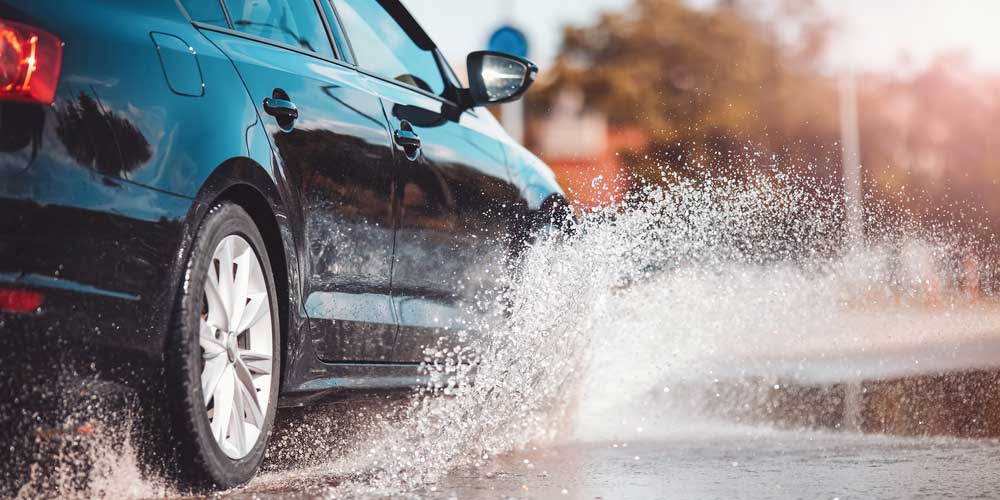With changing weather patterns bringing heavier rainfall across Australia (along with the heat wave!) Fleet managers are facing some tough challenges.
Let’s talk about what this means for your drivers and how to keep them safe when the roads are wet.
The Reality of Wet Weather Driving
We’ve all been there. That moment when the skies open up and suddenly every journey becomes more challenging.
For fleet drivers who spend hours on the road each day, wet weather isn’t just an inconvenience, it’s a serious safety concern.
Heavy rain changes everything. Visibility drops, stopping distances increase, and even familiar routes can become hazardous.
For your drivers making deliveries, visiting clients, or heading to job sites, these conditions add extra pressure to an already demanding job.
Pre-Trip Planning Makes All the Difference
Smart fleet managers know that preparation starts before the keys are in the ignition. When wet weather’s forecast, your drivers need time to:
- Check their vehicles thoroughly – especially wipers, lights, and tyres
- Plan routes that avoid flood-prone areas
- Allow extra time for their journeys
- Pack wet weather gear (because loading and unloading doesn’t stop for rain)
- Check weather updates and road conditions
But here’s the thing – this kind of preparation needs to be built into your culture. It can’t just be something you mention once at a team meeting and expect everyone to remember.
The Hidden Challenges of Wet Weather Driving
Let’s talk about the issues that often get overlooked:
Night Driving in the Wet
When darkness combines with wet roads, everything becomes more challenging. Reflections from wet surfaces can create confusing light patterns, making it harder to judge distances and spot hazards. Your drivers need specific strategies for these conditions.
Loading Zone Challenges
Loading docks and delivery zones become particularly hazardous in wet weather. The rush to stay dry can lead to rushed decisions and poor handling. Your team needs clear protocols for:
- Working with wet manual handling equipment
- Managing slippery loading dock conditions
- Dealing with poor visibility while reversing
- Protecting both themselves and your cargo from the elements
The Pressure Factor
Let’s be honest – your drivers feel the pressure to get the job done, rain or shine. But they need to know they have your backing when they make the call to wait out severe weather.
This means having clear guidelines about:
- When to pull over and wait
- How to communicate delays to base
- What conditions are considered too dangerous
- Alternative plans for severe weather days
Building Real-World Skills
Classroom training has its place, but wet weather driving skills need practical experience. This might include:
Controlled Environment Practice
Getting hands-on experience in controlled conditions lets drivers:
- Learn how different vehicles handle in the wet
- Practice emergency maneuvers safely
- Understand their vehicle’s safety systems
- Build confidence in challenging conditions
Route-Specific Training
Different areas present different challenges in wet weather. Urban delivery routes have different risks compared to regional highways. Your training should cover:
- Known flood-prone areas in your operation zone
- Alternative routes for wet weather
- Local traffic hot spots that become worse in rain
- Safe places to pull over when needed
Maintaining Your Fleet for Wet Weather
Your maintenance program needs special attention during wet seasons:
Regular Checks Become Critical
- Tyre tread depth becomes even more important in wet conditions
- Wiper blades need more frequent replacement
- Lights need regular cleaning and checking
- Brakes need careful monitoring
Driver Feedback Matters
Your drivers are your eyes and ears on the road. Create a system where they can easily report:
- Routes that become problematic in wet weather
- Vehicle issues that affect wet weather performance
- Near-miss incidents that others could learn from
- Suggestions for safer wet weather operations
Creating a Safety-First Culture
The most effective wet weather safety programs are built on a foundation of open communication and trust. This means:
Regular Safety Discussions
- Make wet weather driving a regular topic in toolbox talks
- Share real experiences and lessons learned
- Discuss seasonal challenges before they arise
- Keep safety messages fresh and relevant
Clear Communication Channels
Your drivers need to know:
- Who to contact in emergency situations
- How to report safety concerns
- When and how to communicate delays
- Where to find up-to-date weather information
Looking Ahead: Seasonal Preparation
Different seasons bring different challenges. Use the drier months to:
- Conduct thorough vehicle inspections
- Update wet weather protocols
- Refresh driver training
- Review and improve safety procedures
- Plan for known wet weather periods
As we face more extreme weather events, preparing your fleet for wet weather driving isn’t just about safety – it’s about keeping your business moving when conditions get tough.
Your drivers need the skills, the confidence, and most importantly, your support to make safe decisions in challenging conditions.
Want to make sure your team is ready for whatever the weather throws at them? Let’s talk about practical training that works for your fleet.
Our team understands the real-world challenges your drivers face and can help develop strategies that work for your specific operation.
Call us for a chat about creating a wet weather safety program that works for your team – because every fleet is different, and cookie-cutter solutions just don’t cut it when safety is on the line.





